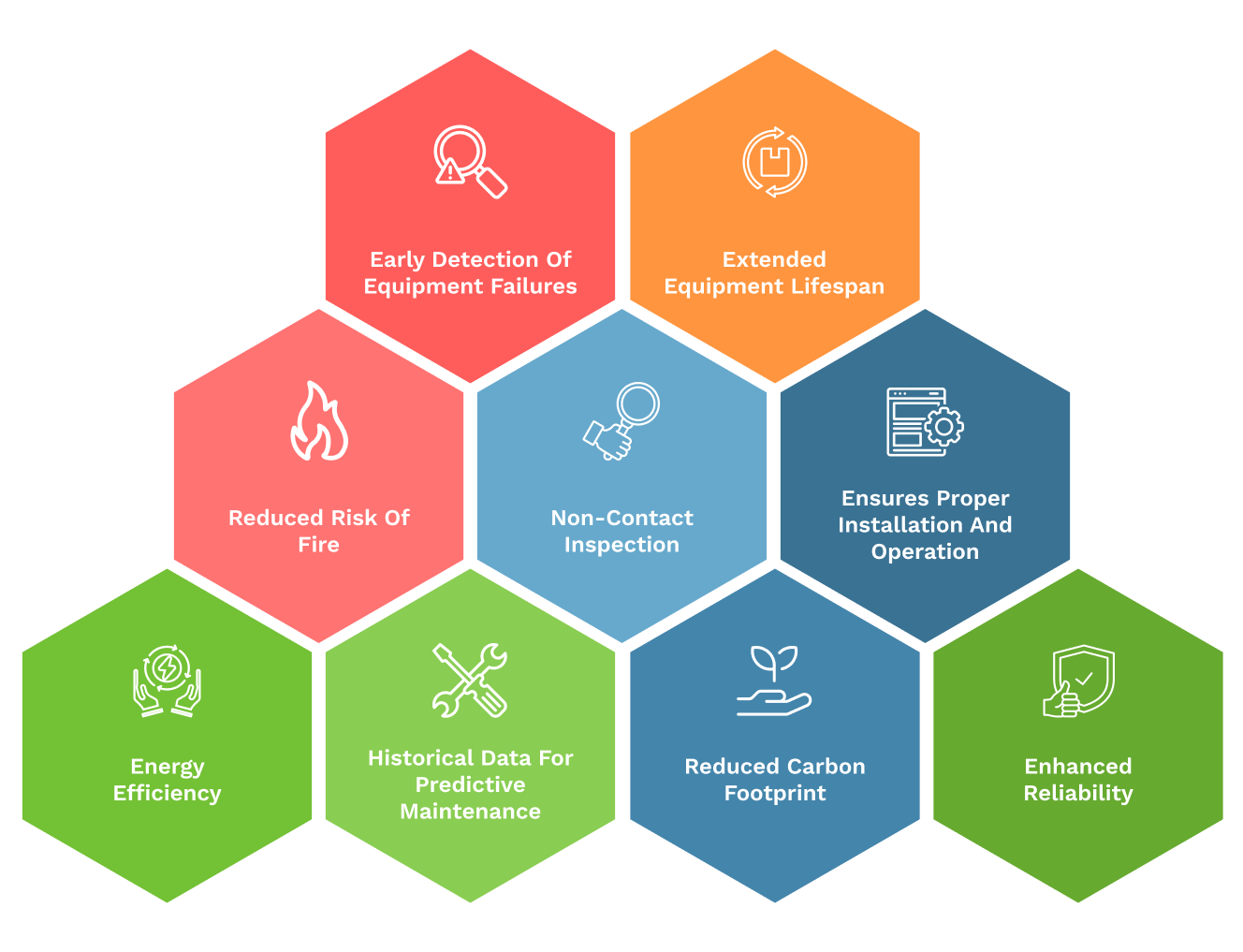 Applications
Applications
Our organisation categorises electrical components based on specific purposes and voltage criteria, simplifying their selection for diverse applications.
 Thermography
Thermography

Its primary function is early fault detection, essential for preventing costly breakdowns and downtime. By enabling preventive maintenance, it maintains equipment condition and operational continuity. Additionally, thermography enhances safety, supports energy efficiency, and ensures product quality. It contributes to environmental sustainability and equipment reliability through its non-invasive nature. Our services offer essential documentation and aid in regulatory compliance, making thermography an indispensable asset for optimizing efficiency and safety in industrial operations.
 What is Thermography in an electrical system?
What is Thermography in an electrical system?

Thermography, often referred to as infrared thermography or thermal imaging, is a diagnostic technique used extensively in monitoring and maintaining electrical systems. This method employs infrared cameras to visualize and measure the thermal energy emitted from an object or scene, which helps detect and assess the temperature distribution on the surfaces of electrical components without making direct contact.
 Principle of Operation
Principle of Operation

Thermographic cameras detect infrared radiation (heat) that objects emit. Since the amount of radiation increases with temperature, these cameras can provide a visual representation of temperature variations.
The camera converts the infrared data into electrical signals, which are then processed to produce a thermal image or thermogram. This image represents different temperatures through various colors or shades of gray.
 Why is Thermography study important to perform?
Why is Thermography study important to perform?

Thermography is an important diagnostic tool in various fields, particularly in maintaining and ensuring the safety and efficiency of electrical systems. Here are some of the key reasons why conducting thermography studies is vital:
Thermography can spot problems before they cause system failure. Industry, where equipment failures can cause major production losses, requires early detection to avoid costly breakdowns and downtime.
Upgrading from electromechanical or solid-state relays to numerical relays can significantly improve the accuracy and speed of fault detection and isolation. Numerical relays offer multiple protection functions integrated into a single device and are easier to configure and maintain. They also provide advanced communication capabilities for seamless integration with other smart grid technologies.
Fires and other hazards can result from electrical problems. Thermographic inspections can detect overheated transformers, switchboards, and electrical connections before they fail catastrophically.
By detecting faults early, thermography extends electrical component life and reduces repair and replacement costs. It helps optimize maintenance costs by arranging repairs based on need rather than routine.
Modern preventative maintenance relies on thermographic inspections. They enable electrical equipment repair before more serious issues arise, ensuring uninterrupted operation.
Thermography keeps an electrical system running smoothly by checking all components for stress or overload. A thermal camera may quickly identify and fix a badly connected wire, which increases resistance and decreases efficiency.
Thermal imaging records electrical system condition over time. Compliance with safety requirements and insurance may need this documentation. Safety requirements are maintained diligently.
Finding locations where electrical systems lose energy due to poor insulation or malfunctioning equipment might save a lot. These inefficiencies can be targeted with thermography to reduce energy use.
Thermography can guarantee equipment operates within defined temperature ranges in manufacturing and production operations for quality control and product standards.
By maintaining equipment so that it runs efficiently and uses less power, thermography helps reduce the carbon footprint of industrial operations, contributing to environmental conservation efforts.
 What is the procedure involved in conducting thermography?
What is the procedure involved in conducting thermography?

Conducting a thermography study, especially within electrical systems, involves a structured process to ensure accurate results and the safe assessment of equipment. Here’s a step-by-step breakdown of the typical procedure involved:
By adhering to this structured approach, thermography can effectively help in the proactive maintenance of electrical systems, ensuring their reliability, safety, and efficiency.
 Benefits achieved by conducting Thermography study
Benefits achieved by conducting Thermography study

